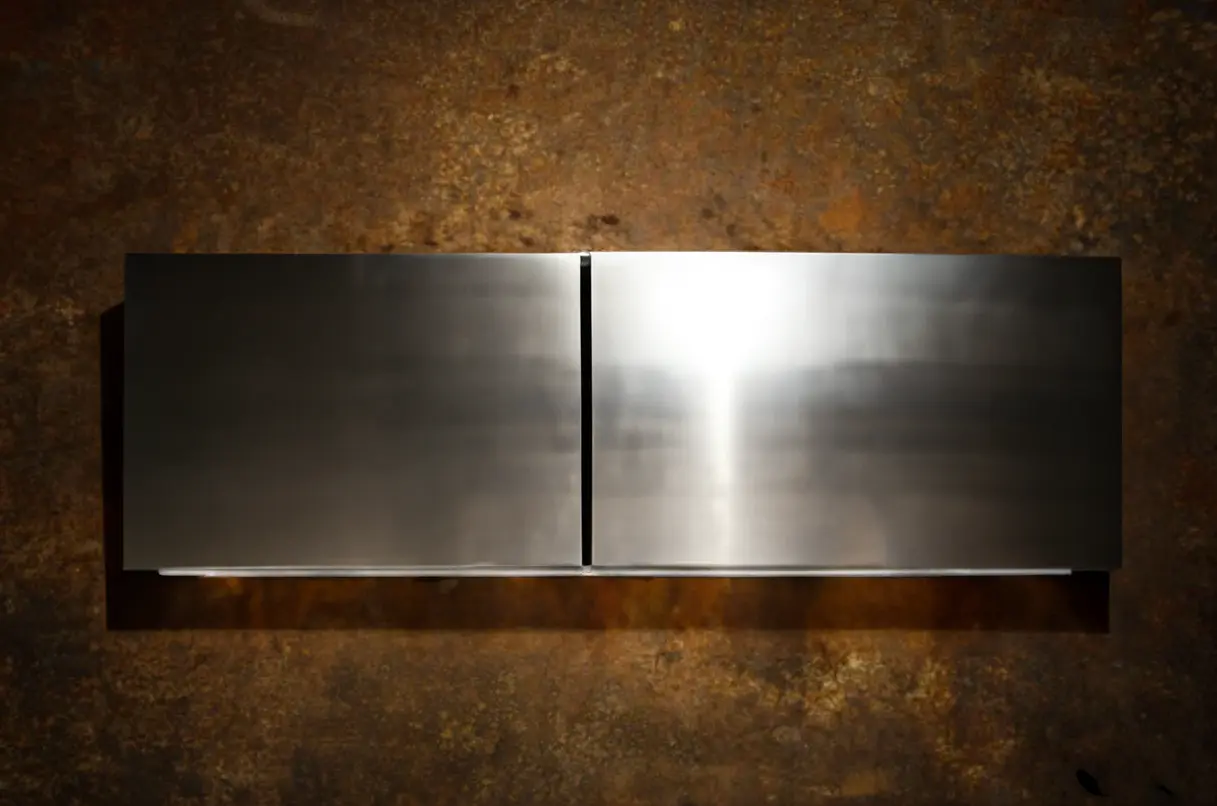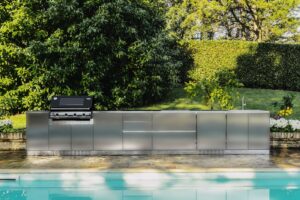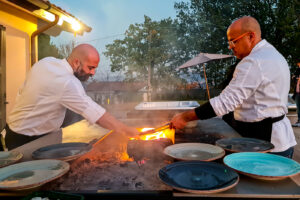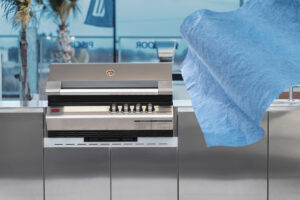Often in the showroom, but also in the company, customers ask us this question when they are about to buy an outdoor kitchen: “Does stainless steel rust over time?”. In this article we will try to remove any doubt about it.
A durable but not maintenance-free material
You have probably heard that stainless steel is the best option for an outdoor kitchen. This is true, but as with most metals exposed to the outdoor elements, there is always the concern about rust and corrosion over time. Although stainless steel is a superior metal for your outdoor kitchen furniture because of its corrosion resistance, it is not maintenance-free. It is stain-resistant, sure, but this does not mean that it will never get dirty or stained if you do not clean it properly and regularly to prevent rust and corrosion. At OF outdoorkitchens we produce elements for outdoor kitchens using the most popular grades of stainless steel (304 and 316). All the different steel types are composed of iron alloys and the element chromium. At least 10,5% of the material must be chromium, key element to combat rust.
Cases where stainless steel fears rust
To reduce overall maintenance and prevent corrosion of bare stainless steel, the addition of a powder coated finish can add beauty and overcome the problem. However, it is important to consider the ways in which bare stainless steel can be susceptible to rust. If normal steel is exposed to oxygen, iron oxide forms and creates the well-known rust colour. The presence of chromium in stainless steel, on the other hand, causes the formation of chromium oxide, which makes this material resistant to rust, slowing its corrosion. Stainless steel that contains sufficient levels of chromium will continue to be protected against rust. Under certain circumstances, however, stainless steel becomes vulnerable. These circumstances include contact with corrosive chemicals or exposure to extremely high temperatures.
Chlorine or excessive heat
Contact with corrosive chemicals without proper cleaning (always remember to use a stainless steel cleaner) will certainly damage stainless steel metal over time. For example, exposure to seawater or pool water can cause rust formation in stainless steel due to the corrosive nature of chlorine in salt water and pool cleaning chemicals. 316 steel is more resistant to corrosion due to the presence of the molybdenum alloy, which provides resistance to heat, salt and other chemicals. It is no coincidence that it is called “marine steel”. However, neither of the two grades of steel is totally immune to corrosion, so regular cleaning is essential, especially if there is exposure to corrosive chemicals. Rust can also come out when stainless steel is exposed to extremely high temperatures. Tipically, this degradation occurs due to the heating and cooling of the metal, in a process called “sensitization”.
How to prevent steel corrosion
The most effective way to prevent stainless steel from rusting is to powder coat the surface. Powder coating involves the deposit of a dry coloured powder on the stainless steel using electrostatic charges. When the surface is heated, the powder coating hardens to a hard finish, thus completely coating the bare stainless steel with an attractive and protective layer. We have seen virtually no examples of rust or degradation on our powder coated furniture in all our years of activity. Is everything clearer to you now? Are you ready to design your stainless steel outdoor kitchen?






